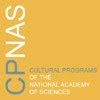Date:Thu, 8 Mar 2007 08:41:42 -0500
3/8/07
I would like to comment on Cuir's remark "art historians and scientists share the same point of view regarding images.
Art historians do not built up images, they interpret existing images in which they have a peculiar interest. Of course, works of art could be seenas the scientific object of the art historian, and sometimes we need scientific imagery of an art work, like X-Ray, to find out about what lieshidden behind the surface. On the contrary, scientists create their images. It seems to me that they are nearer to artists in their use of pictures thanthey are to art historians. Scientists built an image of reality which is more or less faithfull exactly as artists do. But, no need to say that most of the time, they don't share the same goal. But sometimes they do. "
Art historians do not built up images, they interpret existing images in which they have a peculiar interest. Of course, works of art could be seenas the scientific object of the art historian, and sometimes we need scientific imagery of an art work, like X-Ray, to find out about what lieshidden behind the surface. On the contrary, scientists create their images. It seems to me that they are nearer to artists in their use of pictures thanthey are to art historians. Scientists built an image of reality which is more or less faithfull exactly as artists do. But, no need to say that most of the time, they don't share the same goal. But sometimes they do. "
Be careful when you refer to "science" as if representation in science were homogeneous in contrast to other disciplines. It depends very much what scientific pictography we are discussing. Chemistry--notably organic chemistry, which can hardly be described purely in terms of empirical formulae but requires structural representations--is rich in complicated pictography. Much of that pictography bears no real relation to the actual shapes of the molecules as deduced from X-ray crystallography but is just used for visual convenience and ease of information transmittal. All you need to do is to open any page of a journal like the Journal of Organic Chemistry and examine the pictures. You will note that a specific molecule--say morphine--can be depicted in several diofferent ways, some two- and some three-dimensional, which off hand look very different but represent the same molecule and are used interchangeably by chemists, like different dialects for the same word.
 But here is an interesting extension. I happen to be a steroid chemist (or better said I was one) and a couple of years ago, the Austrian post office brought out a stamp on me which in the upper right corner has two mirror image representations of the steroid skeleton as envisaged by organic chemists. But then observe the large image of my face in the background: it is made out of thousands of such steroid structures. In other words, the chemist, who usually synthesizes steroids in the lab, suddenly has his image synthesized out of steroids. The easiest way to see that image and the story behind it is to examine the relevant web site http://www.djerassi.com/stamp/index.html
But here is an interesting extension. I happen to be a steroid chemist (or better said I was one) and a couple of years ago, the Austrian post office brought out a stamp on me which in the upper right corner has two mirror image representations of the steroid skeleton as envisaged by organic chemists. But then observe the large image of my face in the background: it is made out of thousands of such steroid structures. In other words, the chemist, who usually synthesizes steroids in the lab, suddenly has his image synthesized out of steroids. The easiest way to see that image and the story behind it is to examine the relevant web site http://www.djerassi.com/stamp/index.htmlCarl Djerassi
to post a response, click on the "comment" button below:
to return to the main page, go to www.visualcultureandbioscience.org

No comments:
Post a Comment